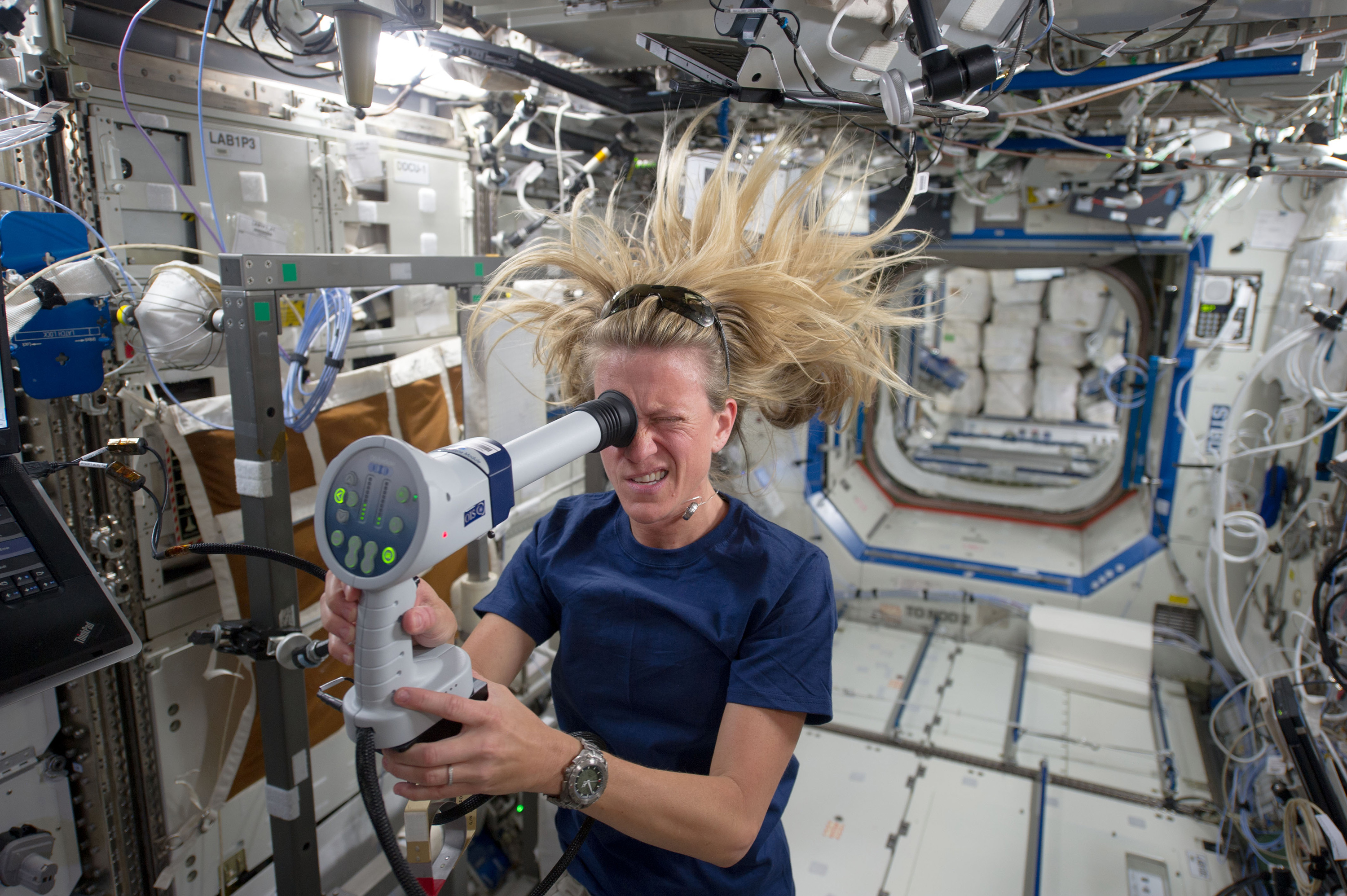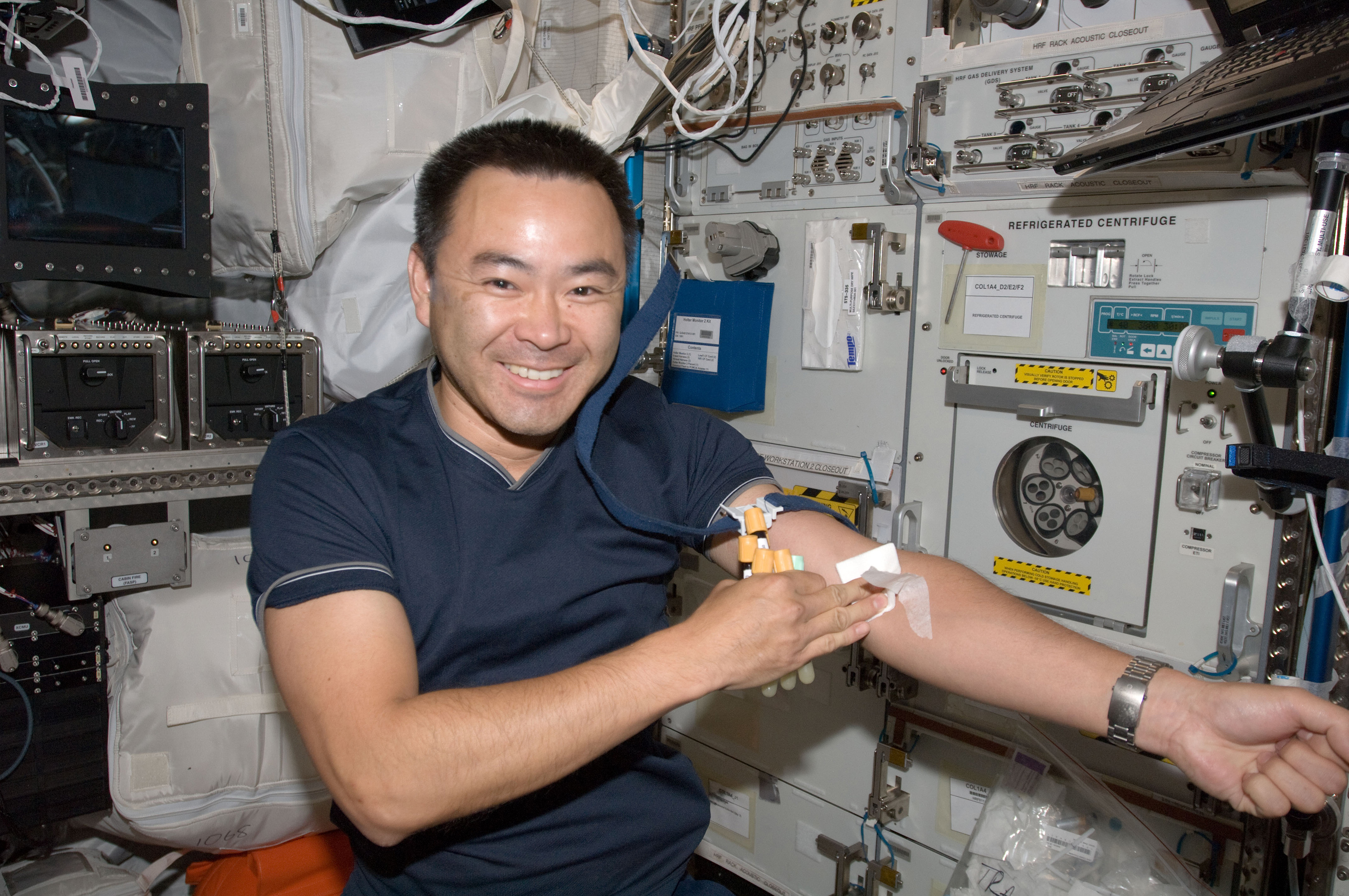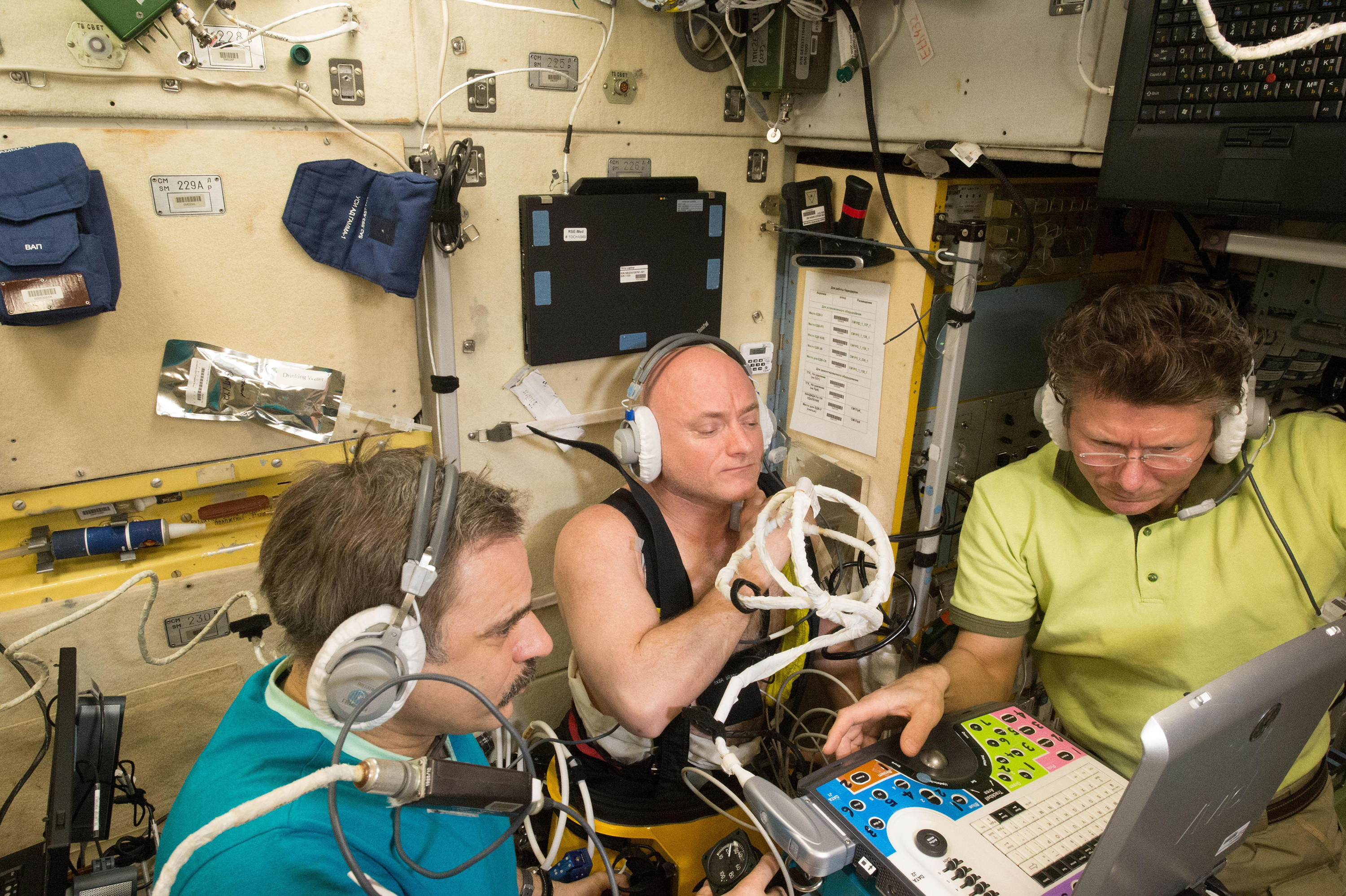Spaceflight does some weird things to astronauts’ bodies

Astronaut Scott Kelly famously lived and worked on the International Space Station for 340 days—the longest time an American has spent in space. His mission gave scientists some vital insight into what happens to the human body during long-duration stays in orbit. That’s because Kelly has an identical twin, Mark (also an astronaut, and now soon to be a US senator). The Kelly twins offered scientists a rare opportunity: as they studied what happened to Scott’s body during his year in space, they had the benefit of a control subject, Mark, who stayed on Earth.
The NASA Twins Study provided more evidence for what we already suspected. In a confined capsule under microgravity and prolonged exposure to radiation, the immune system takes a hit, the eye changes shape for the worse, and there’s some significant loss in muscle and bone mass.
But we also learned about some surprising effects. Kelly experienced changes in his gut microbiome, his cognitive abilities slowed down, certain genes would turn off and on, and his chromosomes experienced structural changes.
“The Twins Study gave us a first sketch of the human body’s molecular responses to spaceflight, but these outlines needed to be filled in,” says Christopher Mason, an associate professor of physiology and biophysics at Weill Cornell Medicine. “The changes we saw needed more context and replication. We needed additional studies to map out the frequency of the changes we observed in other astronauts, and other organisms, that go into space, and also to see if the degree of change was similar for shorter missions.”
That brings us to a new package of research that builds on the Twins Study, reanalyzing some of the original data with new techniques and providing comparisons with other astronauts. In a set of 19 studies published today in a slew of different journals (along with 10 preprints still under peer review), researchers like Mason (a senior author on 14 of the papers) studied the physiological, biochemical, and genetic changes that occurred in 56 astronauts (including Kelly) who have spent time in space—the largest study of its kind ever conducted.
The new papers, which incorporate results from cell-profiling and gene-sequencing techniques that have become easier to run only recently, reveal that “there are some features of spaceflight that consistently appear in humans, mice, and other animals when they go to space,” says Mason. “There appears to be a core mammalian set of adaptations and responses to the rigors of spaceflight.”
The good, the bad, and the inexplicable
The researchers highlight six biological changes that occur in all astronauts during spaceflight: oxidative stress (an excessive accumulation of free radicals in the body’s cells), DNA damage, dysfunction of the mitochondria, changes in gene regulation, alterations in the length of telomeres (the ends of chromosomes, which shorten with age), and changes in the gut microbiome.
Of these six changes, the biggest and most surprising one for scientists was mitochondrial dysfunction. Mitochondria play a critical role in producing the chemical energy necessary to keep cells—and by extension, tissue and organs—functional. Researchers found irregular mitochondrial performance in dozens of astronauts and were able to broadly characterize these changes thanks to new genomics and proteomics techniques. Afshin Beheshti, a bioinformatician at NASA and senior author of one study, says mitochondrial suppression helps explain how many of the problems astronauts experienced (like immune system deficiencies, disrupted circadian rhythm, and organ complications) are actually holistically related to each other, since they all rely on the same metabolic pathways.
“When you’re in space, it’s not just one are or organ that’s affected, it’s the whole body that’s affected,” says Beheshti. "We started connecting the dots."
Other research homed in on problems observed at the genetic level. The Twins Study showed that Kelly’s telomeres got longer in space before shrinking back to normal or even shorter lengths soon after he returned to Earth. Telomeres are supposed to shorten with age, so lengthening makes little sense, and the Twins Study didn’t provide enough data to prompt any real conclusions as to why it happened and what the effects were.
Susan Bailey, a Colorado State University expert on telomere research and a senior author for several of the papers, says the new research found that 10 other astronauts experienced the same telomere lengthening Kelly did irrespective of mission duration—as well as the same telomere shrinking once they came back to Earth.
Notably, one of the papers in the new package found that longer telomeres were also associated with climbers of Mount Everest. For Bailey and her colleagues, this suggests that telomere lengthening is affected by oxidative stress—something that climbers and astronauts both experience, and that disrupts proper telomere maintenance.

They are still trying to pinpoint how these pathways work and exactly what the consequences could be (it’s probably not a secret to longevity), but “we now have a foundation to build on—we know what to look for and be aware of in future astronauts on long-duration [and deep space] exploration missions,” she says.
Though some of the changes are unexpected, many are no cause for concern. “What is amazing to me is how well we adapt to space,” says Jeffrey Sutton, director of the Baylor College of Medicine’s Center for Space Medicine, who was not involved with the new research. Blood cell mutations decreased in Kelly while he was in space (a total surprise for Mason). Astronauts also exhibited decreased levels of biomarkers associated with aging and increased levels of microRNAs that regulate the vascular system’s response to radiation damage and microgravity. One of the strangest findings was that astronauts’ gut microbiomes managed to bring space microbes found on the ISS back to Earth.
“The studies individually and collectively are truly impressive,” says Sutton. “We have entered a new era of space biomedical research, where the approaches and tools of precision and translational medicine are being applied to advance our understanding of human adaptation to space.”
Long-haul worries
Ultimately, however, the data highlights just how much havoc and stress even the healthiest bodies face during space missions—which should have an impact on planning for longer missions. “I don’t think we’re close to sending untrained people into space for really long periods of time,” says Scott Kelly.
Physiologically, he thinks it’s probably safe to send people to Mars and back. In the distant future, however, “instead of going to Mars, we’re going to be going to the moons of Jupiter or Saturn,” he says. “You’re going to be in space for years. And at that point, we’ll have to take a closer look at artificial gravity as a mitigation. I wouldn’t want to be arriving on the surface of another planetary body and not be able to function. A year or so is workable. Several years probably isn’t.”

We’re still far away from having to evaluate those kinds of risks. Mason and his colleagues suggest that there should be pharmacological strategies for reducing the impact of gravity on the bodies of returning astronauts.
Sutton believes precision medicine could play a huge role in tailoring those drugs to protect astronauts against the effects of microgravity and radiation. And the shared biological responses between astronauts and Mount Everest climbers suggest that some interventions used to protect extreme sports athletes from oxidative stress could be applied to astronauts too.
What we need is more data—and more populations to use for comparison. Mason, Bailey, and their colleagues are starting to collect cell and gene profiles of more astronauts, especially those going on future year-long missions. They also want to study people who’ve experienced other conditions similar in some way to spaceflight, such as radiotherapy patients, pilots, and flight attendants.
“The more we know about the health effects of long-duration spaceflight, the better able we will be to help maintain the health and performance of astronauts during and after spaceflight,” says Bailey. “Such knowledge benefits those of us on Earth as well—we are all concerned about getting older, and being in poor health.”
This post has been updated with comments from Afshin Beheshti.
Deep Dive
Space
How to safely watch and photograph the total solar eclipse
The solar eclipse this Monday, April 8, will be visible to millions. Here’s how to make the most of your experience.
The great commercial takeover of low Earth orbit
Axiom Space and other companies are betting they can build private structures to replace the International Space Station.
How scientists are using quantum squeezing to push the limits of their sensors
Fuzziness may rule the quantum realm, but it can be manipulated to our advantage.
Stay connected
Get the latest updates from
MIT Technology Review
Discover special offers, top stories, upcoming events, and more.